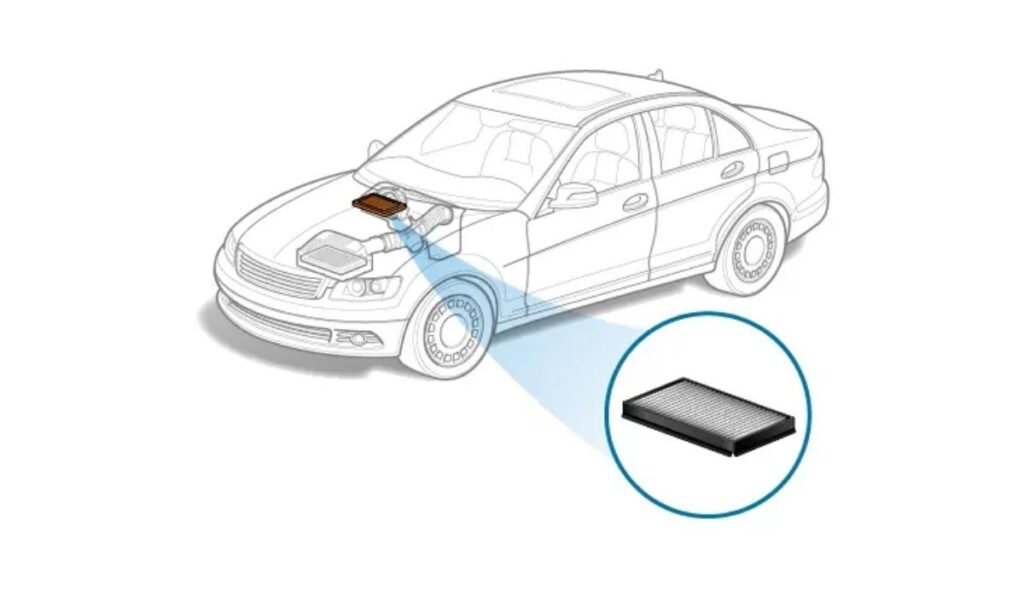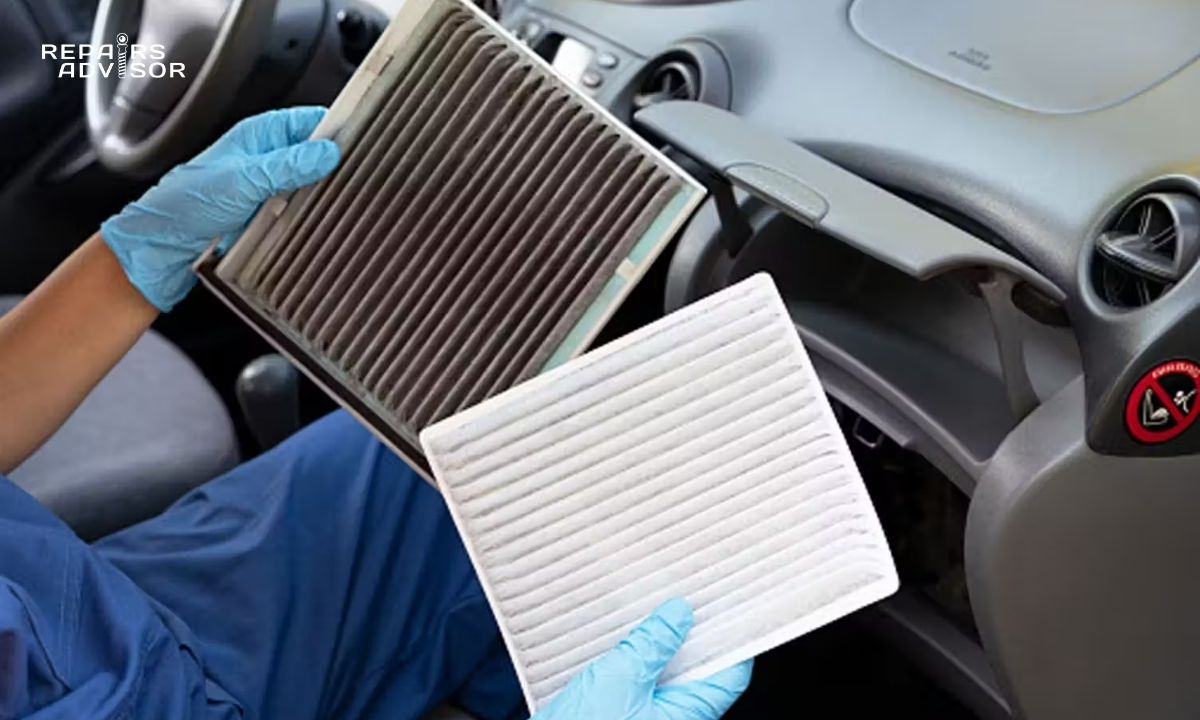Ever thought about the air you’re breathing inside your car? Chances are, it’s cleaner than the air outside, thanks to a small but mighty hero: the cabin air filter! This unsung champion acts like a miniature air purifier for your passenger compartment. Typically made of paper or foam, nestled in a plastic frame, it catches all sorts of nasties before they can enter your car through the climate control system. We’re talking dust, pollen, smoke, bacteria, spores, allergens, even exhaust gases! It also plays bouncer, keeping larger debris like leaves and insects out of your ventilation system.
Believe it or not, the 1989 Mercedes-Benz SL was the first car to make these standard. But just like heated seats and power windows, cabin air filters quickly became a must-have in most new cars. Not sure if your ride has one? Just peek at your owner’s manual!

How to Tell if Your Cabin Air Filter Is Failing
When your cabin air filter gets clogged or dirty, it directly impacts the air quality inside your car. Since it’s part of your climate control system, your ability to breathe clean, particle-free air can suffer. Here are some of the key warning signs that your cabin air filter needs attention:
- Musty or Moldy Smells Inside the Car:
- This is often the most noticeable and unpleasant symptom. As dirt, debris, and moisture build up on a clogged filter, it creates a perfect breeding ground for mold, mildew, and bacteria. The result is a persistent, stale, musty, or even damp odor that fills your cabin whenever you run the A/C or heater. Yuck!
- Reduced Air Flow Through the Interior Vents:
- If your fan is on high, but you’re getting just a weak breeze from your dashboard vents, your cabin air filter might be choked with debris. A clogged filter acts like a blocked nose for your car’s ventilation system, restricting airflow and making your A/C or heater feel less effective.
- Foggy or Icy Windows Take Much Longer to Clear:
- This is a subtle but important safety sign. The cabin air filter helps keep moisture out of your climate control system. If it’s clogged, it can’t properly dry the air before it enters the cabin. This leads to excessive humidity inside, making your windows (especially the windshield) prone to fogging up more frequently and taking a lot longer to clear, especially on humid or cold days.
- A Whistling Noise Coming from the Air Vents:
- Sometimes, as air struggles to pass through a severely clogged filter, it can create a whistling or hissing sound as it forces its way through tiny gaps. This isn’t always present, but it’s another indicator of restricted airflow.
- Increased Allergy Symptoms During Longer Rides:
- If you find yourself sneezing, coughing, or experiencing itchy eyes and a runny nose more than usual when driving, especially on longer trips, your cabin air filter might not be doing its job. A dirty filter can no longer trap allergens effectively, leaving you exposed to pollen, dust, and other irritants that trigger your symptoms.

How to Fix a Bad Cabin Air Filter (It’s Easier Than You Think!)
While the allergens, mold, and mildew from a bad cabin air filter are certainly unpleasant for your health, the real danger is a blocked filter preventing your climate control system from properly clearing your windows. Reduced visibility due to fogged-up windows is a serious safety concern!
Over time, your cabin air filter is supposed to get full of dirt and debris. It’s a wear item, just like your engine’s air filter, meaning it’s designed to be replaced periodically. Your car’s owner’s manual will have the manufacturer’s recommended replacement interval. However, if you often drive in dusty environments or heavily polluted cities, you should definitely consider changing it more frequently!
Here’s the good news: Replacing a bad cabin air filter is usually a quick and easy process you can often do yourself!
- Locate the Filter: Most vehicles conveniently place the cabin air filter right behind the glove compartment door. Some might hide it under the hood or in another less common spot, so check your owner’s manual or search online for your exact vehicle’s specific replacement procedure.
- Get a Replacement: A new cabin air filter is readily available at your car dealer’s parts department, any auto parts store, or online. Make sure you get the correct one for your car’s make and model!
- Swap It Out: Once you’ve located it, it’s usually just a matter of unlatching a few clips or removing a few screws/bolts, pulling out the old, dirty filter, and sliding the new, clean one in.
Whether you choose to have your mechanic replace it or decide to tackle it yourself, the result is the same: you’ll be able to breathe easier and drive safer with a clean, new cabin air filter! It’s a small change that makes a big difference for your comfort and health on the road.
